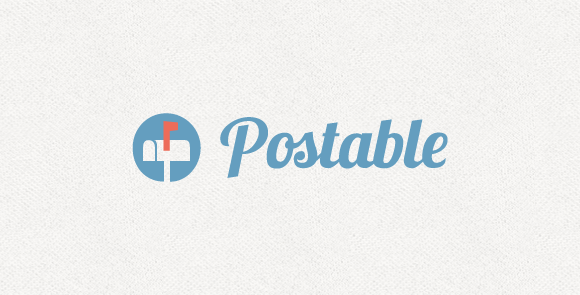
Over the past 3 years, Barrel has seen significant growth, going from 5 people to almost 30. During this period of growth, Peter and I found it increasingly difficult to stay on top of the pulse and sentiment of our team. The frequency of one-on-one conversations that happened when we were 5 people became rarer as the team grew beyond 10.
With less one-on-one conversations, we saw growing gaps between the intent of our decisions and the perception amongst the team. What we may have seen as a great new policy or perk was often perceived as something else. Both sides made assumptions about each other, and it all had to do with the fact that we weren’t communicating enough.
A clear example of this gap came last year during Hurricane Sandy. Peter and I were in San Francisco at the time, and when we heard about the situation back in New York, we immediately dropped everything we were doing to figure out logistics on how to get in touch with people, see if they were okay, and explore ways to set up ad hoc work environments for those who could work. While we communicated with specific team members to take the lead on the ground in New York, we failed to communicate early on with the entire team. While we felt that we acted quickly and empowered the right people back in New York, the overall team perception was that we were absent and not doing much about the situation. A simple, clear email at the start of the storm from either of us emphasizing the importance of everyone’s safety and what the protocol and plan for the week was could have set a totally different tone. Instead, only a few of our team members heard directly from us and the rest were left to wonder if we were doing anything.
These situations made it clear to us that we were not doing enough to communicate with our team. Morale felt low at the office and we often felt disconnected. We took a long, hard look at what we could do better and decided that we needed to change our ways.
Today, almost a year since Sandy, we’re in a much better place. We’ve put together a playbook of communication methods that have helped us to foster a more open culture. It’s by no means perfect, but we’ve seen major progress and hope to continue adding new plays to the mix. The following are some of our “go-to” plays.
Monthly Team Meeting

On the second Wednesday of every month, Peter and I prepare a company-wide monthly team meeting. We gather everyone in our largest conference room, The Garage, and give a presentation. We structure the meetings to review any announcements (recent hires, upcoming events, etc), recap any big milestones and achievements, and bring up new major initiatives that affect everyone in the company.
We open up the floor to discussions especially when announcing major changes, making sure people have the opportunity to raise questions. A couple of months ago, when we revealed a new policy regarding gaining PTO days for work done on weekends, people had some very insightful questions. We were able to walk through the concerns and clarify several points around how to calculate the hours worked, and the exact protocol for how to redeem the PTO days.
Since there are many initiatives that are covered in the meetings, all of the presentation PDFs get archived on our internal Info Center website so people who are absent can easily reference past meetings. We appreciate how the monthly meeting brings the whole team together and allows us to get on the same page about what’s going on with the company.
Weekly Principal Updates

Since the end of 2012, Peter and I have been sending out a weekly email to our team called the Principal Update where we write about the things on our minds. The topics change from week to week, but the goal is to give people insight into what we’re doing in our capacity as Principals and make sure the team hears from us on a consistent basis.
We use the Principal Update to proactively address any concerns that we might have heard from the team or to broach difficult conversations. Recently, we’ve been using the Principal Update to announce some team departures and thanking people for their contributions. We’ve also used these as opportunities to explain our thoughts on the positive outlook of an evolving team.
Principal Updates have also encouraged us to expand on ideas that may eventually find their way to a blog post. For example, Peter’s post Slimming Our Client Roster started as an email we sent to the team about the direction we’re taking with new business and asking team members to be involved in helping us redefine our Core Principles. Having a weekly outlet to explain our thinking behind our decisions has been critical for keeping everyone informed.
Anonymous Feedback Form

Around the time we started sending the Principal Updates, we supplemented it with a simple anonymous feedback form built on Jotform. We wanted to give people an outlet to share their thoughts on things positive or negative without letting us know who said the comment. It’s often used as a platform for people to react to the content of our Principal Updates.
We’ve gotten great feedback from the form ranging from “we need Listerine pumps in the bathroom” to “I’m not happy with how you guys handled and talked about this person leaving”. It’s been a platform for people to share ideas on activities for the office such as board game nights, swag to order for the office, and upgrading our mobile device center. Occasionally we receive serious concerns, and while it might up our stress levels when we get them, we appreciate that the anonymous feedback mechanism is working and provides us with valuable information. It’s a healthier relationship when people feel comfortable sharing their concerns rather than internalizing them.
The downside of the Anonymous Feedback Form is that we would love to respond to the comments. We have no idea who submits feedback through the form, and we’re unsure if they want us to share with the group. It’s often a judgment call, and in many cases, if a major concern is brought up, we’ll make it a point to bring it up during a Principal Update or Monthly Team Meeting.
One-on-One Lunches

Going out to lunch with a different person twice a week for one-on-one meals has been a game changer. Peter and I cover four team members a week this way, and it’s been an amazing way to get to know our team better.
To keep ourselves accountable, we’ve scheduled a dedicated time block every Tuesday and Thursday from 12:30PM-2:00PM. Peter and I set up a shared Google Spreadsheet to keep track of all the lunches and where we went.

Being located at the intersection of Nolita, Soho, Chinatown, and Little Italy, there’s an abundance of restaurants within a 5-block radius from our office. It’s not difficult to find new places around here, but you’ll notice that I return frequently to some of my favorites: Balaboosta, Ruby’s, Grey Dog, and Back Forty West.
The one-on-one meetings have had an immense impact already. Each lunch typically covers topics such as projects the person is working on, their thoughts on team culture, things going on outside of work, and questions about the company’s direction. The lunches have helped us to learn more about how our leadership is perceived, and we’ve been able to make various adjustments based on the feedback.
Know Your Company

We also use Know Your Company, a service by 37Signals that tries to achieve the goal of getting to know our team using an automated tool. The platform works like this: on Mondays, an email is sent around to the team asking everyone what they’re working on for the week; on Wednesdays, there is an email prompt about something company-related, for example “Do you think we’re behind in anything?”; and on Fridays there is a social question such as “Have you met anyone famous?”
We’ve opted to turn off the Monday question and really focus on the Wednesday question, which we can modify and add to anytime. There’s a stock list of pretty good questions, so we’ll interchange them with some of our own written questions. Overall, we found that specific prompts allow people to think of things that they otherwise wouldn’t have brought up.
One example was a response we received to the question “Do you have all the tools you need to do your best work?” One of our developers replied that it would increase his productivity to have a second monitor. This was a surprise because we often ask people not to hesitate to put in requests for any tools that would help them in their work. We wondered if others might have the same monitor issue and sent out a questionnaire. Five others replied that they, too, would benefit immensely from a second monitor. The next week, they all had a second monitor on their desks.
BourbON Fridays

Every Friday at 5:30PM, we gather as a team and take a moment to celebrate the wins for the week small and big in what we call BourbON Fridays. People take turns thanking other members of the team for things like helping each other debug pieces of code, pulling through with last-second deadlines, or for killing it on a client presentation. We find it’s important to take the time at the end of a busy week to reflect on our collective achievements. To learn more about the history and mechanisms behind BourBON Fridays, check out this blog post by Peter.
Moving Forward
We’re continually looking for ways to communicate better with our team. In creating a culture where people are open, honest, and transparent with each other, it’s important that Peter and I set the standard for communication. Nothing will take the place of consistent one-on-one conversations, but it’s important to find the proper platforms for people with different personalities to have their voices heard.
We want to create an environment where people are honest with us and with each other and feel that they’re in a position to do their best work.





Pingback: canada payday loans
Pingback: direct payday loans with bad credit history lender
Pingback: drugrehabcentershotline.com heroin addiction treatment